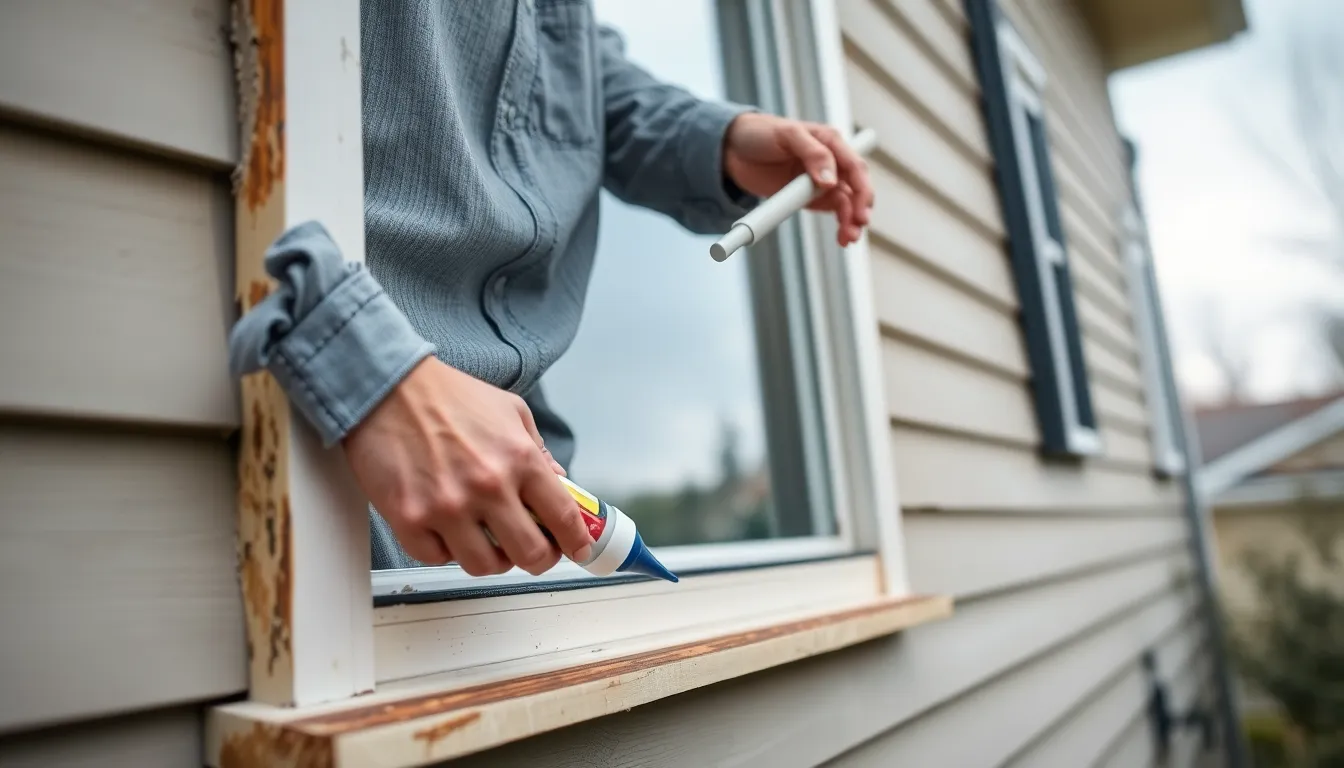Table of Contents
ToggleWhen winter rolls around, the last thing anyone wants is to feel like they’re living in a giant icebox. Home insulation isn’t just a fancy term for what keeps the cold out; it’s the secret weapon against skyrocketing energy bills and chilly drafts. With a few smart tweaks, homeowners can transform their cozy abode into a fortress of warmth without breaking the bank—or their backs!
Understanding Home Insulation
Home insulation plays a crucial role in maintaining a comfortable living environment. It reduces energy consumption and lowers costs, making it a significant investment for homeowners.
Importance of Home Insulation
Home insulation enhances energy efficiency and maintains consistent indoor temperatures. It prevents heat loss during winter, significantly lowering heating costs. Proper insulation also contributes to improved indoor air quality by reducing drafts and moisture. Studies indicate that effective insulation can cut energy bills by 20% or more. Homeowners often see a rapid return on investment through reduced energy expenses.
Different Types of Insulation Materials
Insulation materials vary in type and effectiveness. Fiberglass insulation comes in batts or loose-fill, offering cost-effective thermal control. Spray foam insulation serves as an air barrier and provides excellent thermal performance. cellulose insulation, made from recycled paper products, is eco-friendly and effective for soundproofing. Rock wool insulation is fire-resistant and provides superior sound-dampening properties. Select the right material based on desired performance and budget for optimal results.
Effective Home Insulation Tips

Proper insulation techniques improve energy efficiency and comfort. Implementing these tips can enhance a home’s thermal performance significantly.
Sealing Windows and Doors
Seal gaps around windows and doors to prevent energy loss. Weather stripping offers an effective solution, minimizing drafts and keeping indoor temperatures stable. Caulking cracks seals air leakage points, creating a tighter seal. Homes with well-sealed windows and doors can see energy bill reductions of up to 10%. Double-paned windows provide extra insulation, reducing heat transfer and enhancing overall efficiency.
Insulating Attics and Roofs
Insulating attics and roofs prevents heat loss and maintains a comfortable indoor environment. Fiberglass batts stand as a popular choice for attic insulation, offering good thermal resistance. Spray foam insulation can fill gaps effectively, creating an airtight seal. Homes with properly insulated attics often gain improved energy performance, with potential savings of 20% on heating costs. Regularly inspecting insulation ensures effectiveness and allows for necessary updates.
Using Reflective Barriers
Using reflective barriers contributes to temperature regulation in homes. Installing these barriers in attics reflects radiant heat away from living spaces. This technique is particularly beneficial in warmer climates, where excess heat can raise cooling costs. Homeowners can find reflective barriers such as radiant barrier foil installed easily alongside existing insulation. Overall energy efficiency improves significantly by integrating reflective barriers into insulation strategies.
Energy Efficiency Benefits
Home insulation plays a vital role in enhancing energy efficiency. It not only creates a comfortable indoor environment but also offers substantial financial and ecological advantages.
Cost Savings on Energy Bills
Insulation significantly reduces energy bills. Homeowners can often see reductions of 20% or more on heating costs. Sealing drafts with weather stripping and caulking around windows and doors can cut expenses by an additional 10%. Properly insulating attics and roofs, using materials like fiberglass or spray foam, contributes to temperature regulation, further lowering utility expenses. By investing in effective insulation strategies, individuals save money while ensuring comfortable living spaces throughout the year.
Environmental Impact
Effective insulation minimizes energy consumption. Reduced energy demands translate into lower carbon footprints. Using insulation materials with high R-values diminishes reliance on heating systems, leading to fewer greenhouse gas emissions. Home insulation supports sustainability goals by encouraging efficient energy use, contributing positively to the environment. Prioritizing insulation in homes leads to ecological benefits that align with modern energy conservation efforts.
Common Mistakes to Avoid
Homeowners often encounter pitfalls when insulating their homes. Recognizing and avoiding these errors can enhance energy efficiency and comfort.
Over-Insulating Certain Areas
Over-insulating can lead to unwanted effects, such as trapped moisture. Attics and walls each require specific insulation levels; exceeding these can cause problems. For instance, insulating an attic excessively might compromise ventilation, resulting in mold growth. Proper assessment of insulation needs helps maintain balanced indoor climates. Evaluate the R-value requirements based on local building codes to ensure optimal performance. Avoid the temptation to insulate every inch; strategic insulation focuses on critical areas.
Ignoring Local Climate Conditions
Local climate significantly affects insulation choices. Different regions demand tailored insulation strategies to ensure energy efficiency. For example, colder climates benefit from higher insulation levels to retain heat, while warmer areas may require reflective barriers to reflect sunlight. Additionally, each material’s effectiveness varies based on local temperature and humidity patterns. Consult weather statistics to determine the best insulation type for specific environments. Adapting insulation plans to match climate conditions maximizes energy savings and enhances comfort.
Investing in proper home insulation is a smart move for any homeowner. It not only enhances comfort but also delivers significant savings on energy bills. By selecting the right insulation materials and implementing effective strategies, individuals can create a more energy-efficient living space.
Addressing common mistakes and tailoring insulation methods to local climate conditions can further maximize benefits. Homeowners who take these steps will enjoy a cozy environment while contributing to a more sustainable future. Prioritizing insulation is a win-win for both personal finances and the planet.







